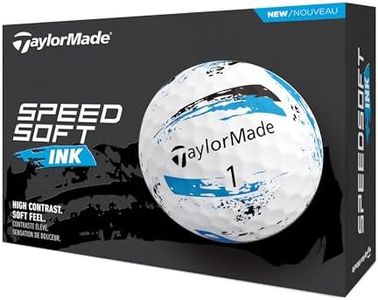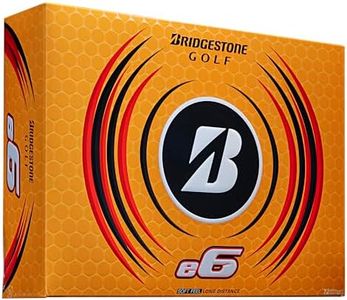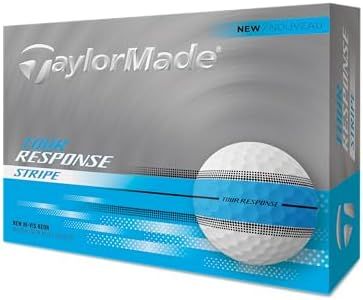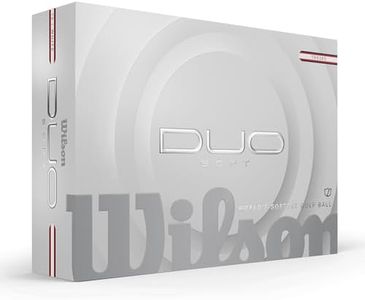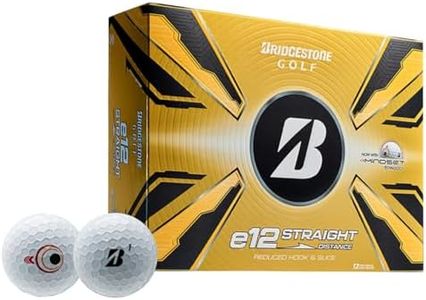We Use CookiesWe use cookies to enhance the security, performance,
functionality and for analytical and promotional activities. By continuing to browse this site you
are agreeing to our privacy policy
10 Best Womens Golf Balls
From leading brands and best sellers available on the web.Buying Guide for the Best Womens Golf Balls
Choosing the right women's golf balls can enhance your enjoyment of the game and potentially improve your performance. The key to picking the right golf balls is understanding how different features impact feel, distance, and control. Each feature affects how the ball reacts to your swing and playing style. Focus on matching the ball characteristics to your skill level and what you want from your golf game, such as more distance, better control around the greens, or a softer feel.CompressionCompression indicates how much the ball deforms when struck and is generally measured with a numeric value. Lower compression balls (usually rated under 60) are softer and require less force to get good distance, making them popular among women with slower swing speeds. Mid compression (60-80) offers a balance of feel and control, suitable for moderate swing speeds. Higher compression balls (80 and above) are firmer and targeted at those with faster swing speeds, providing more control but requiring more power. You should select a compression based on your swing speed—slower swing speeds usually benefit from lower compression for maximum distance and comfort.
Cover MaterialGolf ball covers are typically made from either Surlyn or urethane. Surlyn covers are durable, resistant to scuffs, and provide a firmer feel with more distance but less spin control. Urethane covers are softer and offer more spin and control, especially helpful around the greens, but tend to wear out quicker. If you prioritize distance and durability, especially as a beginner, a Surlyn cover is practical. If you have more experience and want better control for finesse shots, consider trying urethane.
Number of Layers (Construction)Golf balls can be two-piece, three-piece, or even multi-layered. Two-piece balls are simpler, durable, and promote longer distances, making them ideal for beginners or those prioritizing distance. Three-piece or multi-layer balls offer more control and better feel, especially for shaping shots around the green, and are suited for players looking to advance their skills. Consider your experience: new or casual golfers benefit from simpler two-piece balls, while those seeking more performance may prefer multi-layered designs.
Spin RateSpin rate describes how much the ball spins when hit, impacting flight path and control. Low spin balls roll farther on the ground, suiting those who need extra distance and have trouble keeping shots straight. Mid spin balls offer balanced performance, suitable for most recreational players. High spin balls can help experienced players stop the ball quickly on the greens but may make mistakes like slices or hooks more noticeable. If you want straighter shots and more roll, look for lower spin; if control around the green is more important, consider medium or higher spin rates.
Ball Color and VisibilityColor and visibility might seem cosmetic, but they can make a difference in tracking your ball in flight or finding it on the ground. While white is classic, brightly colored balls such as pink, yellow, or orange stand out better in various conditions. If you play on courses with lots of grass or in lower light, colored balls can help you avoid losing balls and speed up play.



